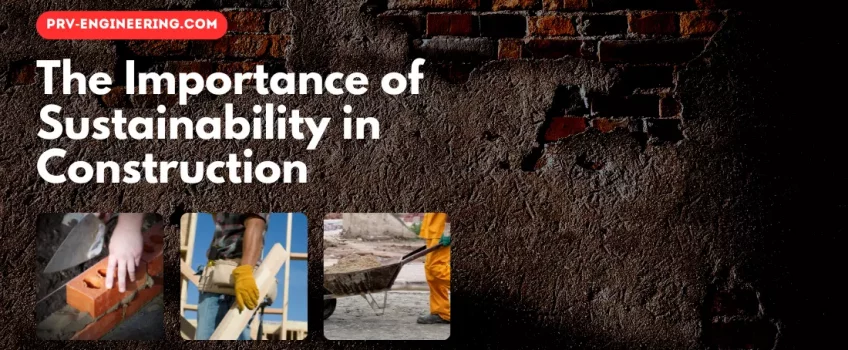
EFC, or Earth Friendly Concrete, is cement-free concrete that typically results in a carbon reduction of 75% to 87% when compared to traditional concrete mixes. It consists of a geopolymer binding agent that is produced from the chemical activation of blast furnace slag and fly ash rather than OPC (ordinary Portland cement). As such, Earth Friendly Concrete may help to minimise the carbon impact of concrete used in construction projects.
Benefits Of Earth Friendly Concrete
While the initial price of EFC may be greater than that of traditional concrete, in the long run, it is a more cost-effective option. The carbon footprint of eco-friendly concrete is considerably lower than that of standard Portland cement concrete, owing to the following advantages:
- High performance and improved durability
- Lower shrinkage
- Earlier strength gain
- Higher flexural tensile strength
- Less heat generation during curing
- Low CO2 concrete in comparison to conventional concretes
- Excellent mechanical and structural properties
- Great for chemical protection and resistance
- Very low-temperature rise, particularly for deep sections
- Natural off-white colour
- Low reaction and a lower corrosion rate than traditional concrete.
- Helps to attain BREAM rating
As a result of these incredible benefits, more companies are turning to Earth Friendly Concrete for sustainable construction whether it’s for a new build or renovation projects.
Applications Of Earth Friendly Concrete
Since the engineering and construction properties of EFC are equal to and surpass traditional concrete, companies can use it in nearly all the same applications. Some examples include:
- Pavements and roads
- Structural elements
- Precast panels
- Bridges and dams
- Marine structures
- Masonry units
- Pavers, slabs, walls and columns
- Concrete Flooring
- Deck units and tunnel segments in major infrastructure projects
Earth Friendly Concrete has an added benefit over conventional concrete in tunnel segment production, in particular. Early strength development, as well as increased fire resistance, are among the biggest advantages. In addition, EFC outperforms in traditional concrete in many marine applications.
Producers Of Earth Friendly Concrete
Wagners is a leading construction materials specialist developing and providing services for Australian and international markets. As part of their New Generation Building Materials (NGBM) business, Wagners creates sustainable materials that not only perform better than traditional materials but they also have a lower impact on the environment.
Earth Friendly Concrete has been used for a project in London to help reduce carbon emissions and the costs of producing ground bearing slabs. EFC is being used by Keltbray, a fellow specialist in the construction engineering field, to construct its new treatment plant.
Projects Using EFC
Based in West Silvertown, Keltbray handles both hazardous and non-hazardous construction waste. The new facility forms part of its Environmental Solutions division, assessing, treating and disposing of more than 350,000t of waste per year. It is slated to replace their existing facility near Thames Wharf since the Silvertown Tunnel project will take over the site.
Since the site is close to the River Thames, it can accept material and dispose of it using barges instead of lorries. In addition to cutting carbon emissions through Earth Friendly Concrete, the reduced number of lorry journeys will further reduce their carbon footprint.
Wagners has been working with Capital Concrete using its EFC on HS2. As of November 2021, more than 900 m³ have been used for the temporary works piling mats and 2 km³ for haul roads and bases for cranes. The company’s Earth-Friendly Concrete has so far saved 725,000kg of carbon.
The Importance Of Sustainable Construction
The overall objective of sustainable construction is to minimise the industry’s impact on the environment. Sustainable construction not only implies better health for those who live in the structures but has also been proven to improve production during construction owing to greater accessibility and work conditions.
Sustainable construction, including using Earth Friendly Concrete, does not end after the structure is done as its environmental effect should diminish over time. This means that the building’s design should include features that maintain a beneficial impact on the facility’s long-term environmental impact.
Examples could include more effective insulation to minimise heat loss, solar panels to decrease energy consumption, and materials with longer service life.
Why Is Sustainable Construction Becoming Increasingly Important?
The construction industry has a significant effect on the environment, from energy consumption to air pollution. Aside from the potential for construction development over wild areas, construction sector energy usage is significant. Here are a few reasons for the call to introduce more sustainable construction and the use of Earth Friendly Concrete:
- Construction is responsible for 36% of worldwide energy consumption and 40% of CO2 emissions (source: IEA).
- Construction machinery still relies heavily on fossil fuels, and even minor inefficiency can result in waste further down the energy supply chain.
- Fabrication and shipping construction materials also impact carbon emissions.
- Mining for raw materials can result in polluting local water tables
- Manufacturing concrete has resulted in over 2.8bn tonnes of CO2.
- Construction can result in hazardous waste, and improper disposal affects the environment and the health of people living in the area.
Conclusion
Sustainable construction is frequently critiqued for the usage of high-cost materials, yet green constructions are commonly thought to be more valuable than conventional ones. Data has revealed that sustainable construction projects result in a 7% rise in asset value and utility cost savings for tenants or families, as well as better resale prospects.
Whether you use Earth Friendly Concrete, wood, mud bricks, straw bales or plastic, sustainable construction is the way forward. Plastic may be one of the world’s greatest enemies but when used responsibly, it can play a pivotal part in the construction sector.
If you like reading this article, please share it and be sure to follow our blog and join the conversation on social media using the hashtag #PRVtech. We write up to date content on various topics including construction, rail, automotive, defence and aerospace among many others.


 Mail:
Mail: 



